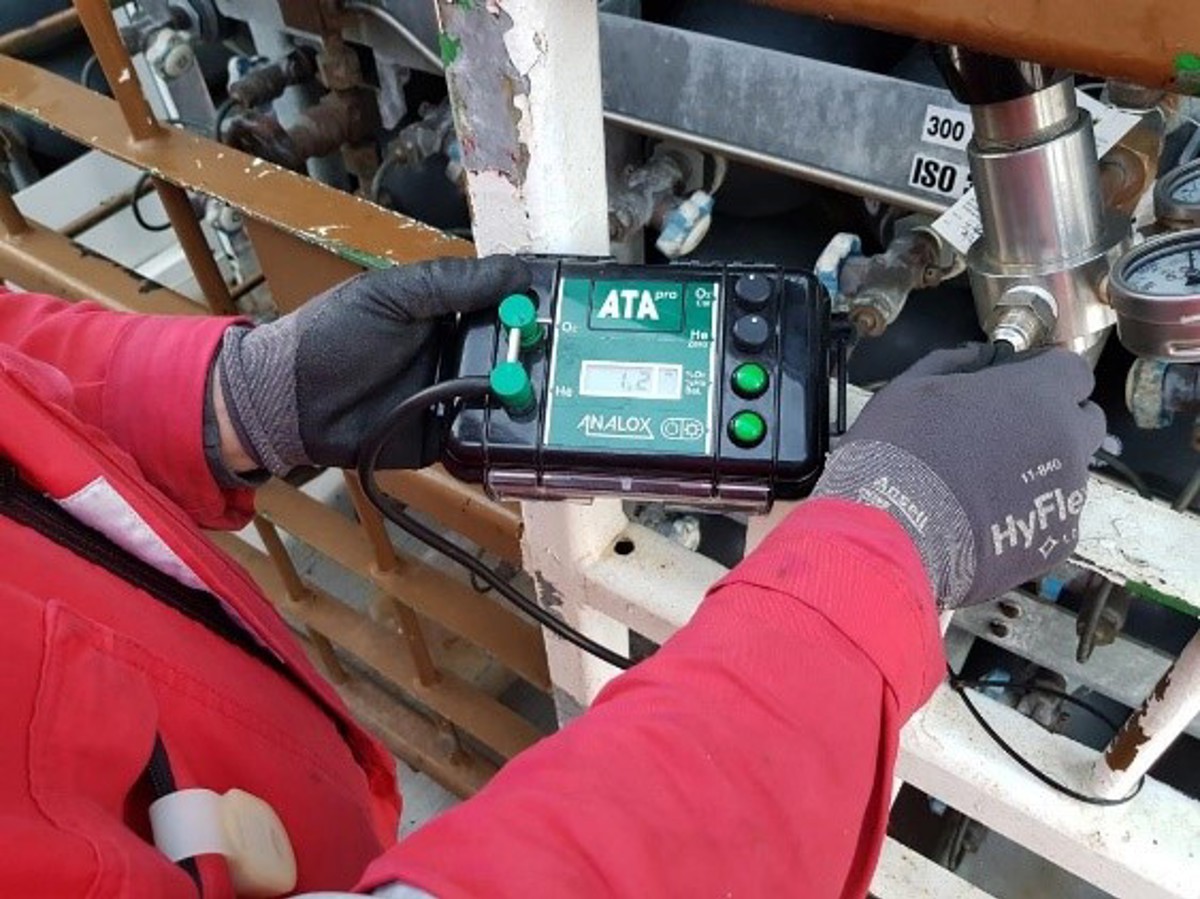Helium gas quad – Gas variances across quadrants
- Safety Flash
- Published on 13 May 2019
- Generated on 21 December 2025
- IMCA SF 10/19
- 2 minute read
Jump to:
During a planned mobilisation of five Helium gas quads (2% O2, 98% He), one of the gas quads was found to differ from the others.
What happened?
All of the quads were labelled and certified as being 2.05% O2.
One quad, however, was stencilled as 12% O2 and 88% He.
When the gas man began his analysis of the quad, the first quadrant indicated 1.21% O2. Each quadrant was subsequently analysed and provided the following readings:
1) 1.21%
2) 1.40%
3) 3.73%
4) 1.84%
The intention was to store the quad onboard for use at a later time rather than decant all of the gas into kellys.
This quad was rejected by the diving support vessel (DSV) and returned to the supplier.

What went wrong? What were the causes?
It was established that there was some human error:
- Poor production checks resulted in the incorrect stencilling.
- Poor mixing of gases before filling.
What lessons were learned?
- Always make sure that the contents match with the quad markings, the paperwork supplied and is tested on site.
- When the manufacture recharges 64-cylinder quads, they may fill the four quarters separately (16 cylinders) of the unit, accounting for the variations.
The average of the quad was just above 2%, but the different quarters may have varied. In this case, if the vessel were to have decanted or used the gas directly from each quarter, they would not have received the required 2% mix. If the entire quad were decanted (all 4 quarters at the same time), this would have provided the 2% mix.
Our member noted that this is not a common occurrence, but that all personnel should be made aware that differences in gas ratios may occur in quads and check with individual suppliers whether quadrants need to be sampled individually.
Related Safety Flashes
-
IMCA SF 01/16
7 January 2016
-
IMCA SF 08/13
21 May 2013
-
IMCA SF 06/12
25 June 2012
IMCA Safety Flashes summarise key safety matters and incidents, allowing lessons to be more easily learnt for the benefit of the entire offshore industry.
The effectiveness of the IMCA Safety Flash system depends on the industry sharing information and so avoiding repeat incidents. Incidents are classified according to IOGP's Life Saving Rules.
All information is anonymised or sanitised, as appropriate, and warnings for graphic content included where possible.
IMCA makes every effort to ensure both the accuracy and reliability of the information shared, but is not be liable for any guidance and/or recommendation and/or statement herein contained.
The information contained in this document does not fulfil or replace any individual's or Member's legal, regulatory or other duties or obligations in respect of their operations. Individuals and Members remain solely responsible for the safe, lawful and proper conduct of their operations.
Share your safety incidents with IMCA online. Sign-up to receive Safety Flashes straight to your email.

